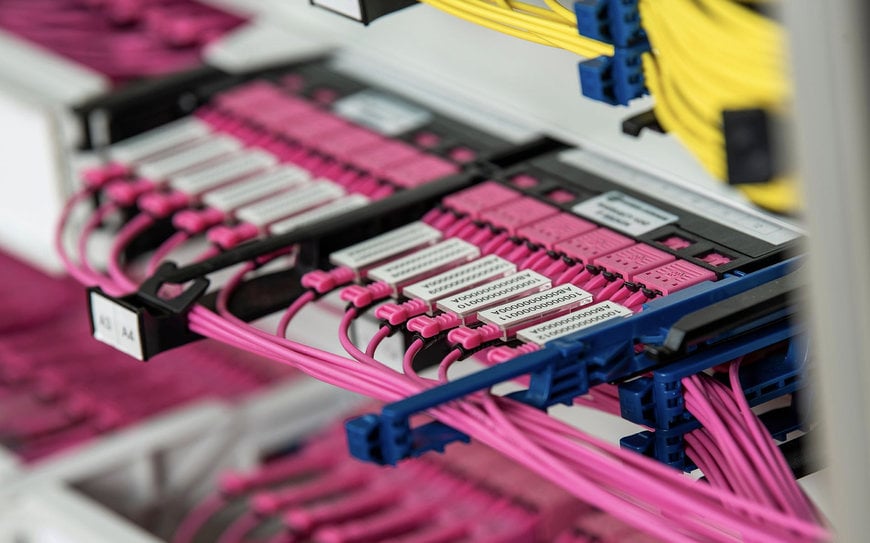www.magazine-industry-usa.com
19
'24
Written on Modified on
Enhancing connectivity in control panels
By Radek Slováček and Vít Čech technical consultants at connector specialist PEI-Genesis, delve into the importance of fiber optic connectors in control panel applications.

Fiber optic connectors are integral to control panel applications, ensuring dependable and high-speed data transmission across diverse industrial systems. Selecting appropriate connectors for control panel applications is pivotal in guaranteeing optimal performance, reducing downtime and preserving overall system efficiency.
Control panels play a pivotal role in overseeing various industrial processes like manufacturing, automation and telecommunications. Serving as the central hub, they monitor and control an array of systems, encompassing sensors, actuators, switches and other essential components. As the need for swifter and more dependable data transfer grows, fiber optic technology has emerged as the preferred solution for enhancing control panel connectivity.
Fibre optic connectors enable the seamless transmission of large amounts of data over long distances with minimal signal degradation. They offer several advantages over traditional copper connectors, including higher bandwidth, immunity to electromagnetic interference (EMI) and enhanced security due to their immunity to tapping. Additionally, fibre optic connectors provide improved resistance to harsh environmental conditions, such as temperature extremes, humidity and chemical exposure, making them ideal for control panel applications in challenging industrial environments.
Cable management techniques
When selecting the appropriate connectors and cables, it is important to consider all the requirements and environmental influences that arise during installation, changes, de-installation or operation. The choice of cable determines several other parameters that define the method of cable manipulation or the minimum bending requirements.
Optical fibre has many advantages over copper conductors in terms of electromagnetic interference and power line interference, but it is sensitive to moisture and micro and macro bends. Optical cables require more delicate and thoughtful management, storage procedures, and consideration of technological reserves.
Inappropriately chosen or poorly implemented cable management systems can ultimately increase maintenance costs or hinder future expansions or changes to existing installations. It is also the second most common cause of service interventions. Connectivity costs often represent up to five per cent of the total solution but cause 95 per cent of the problems.
Compatibility with existing systems and equipment is a crucial best practice when it comes to choosing cables and connectors. Users need to assess the requirements of the control panel and determine the type of connectors used in the network infrastructure. Common connector types include LC, SC, ST and MPO/MTP. Opting for compatible connectors will simplify installation and minimise the need for additional adapters or converters.
Similarly, control panels often have limited space, making it important to opt for connectors that offer high connector density, such as MPO/MTP connectors. These connectors allow multiple fibres to be terminated in a single connector, reducing the space required for cabling and improving overall panel organisation.
Choosing connectors that offer scalability and compatibility with emerging technologies will also save costs and effort in the long run. Users should consider solutions that support higher data rates and would be supported in the future. In that field there is a noticeable increase of users choosing single mode solution instead of lower-priced multimode (such as OM4 or less adopted OM5). One of the key factors causing that is price difference decreasing enough to justify advantages of the single mode solutions.
Control panels can also be subjected to harsh environmental conditions, including temperature fluctuations, humidity, dust and vibrations. It is important to choose fibre optic connectors that are designed to withstand these conditions. Connectors with robust sealing, dust caps and ruggedised housing provide enhanced protection against contaminants and ensure long-term reliability.
Looking to the future, fibre optic technology will continue to evolve and shape the control panel industry. The increasing demand for high-speed data transmission, longer reach, wider bandwidth, and electromagnetic interference resistance positions fibre optics in a more significant role in future cabling, not just in data centres.
Working with trusted manufacturers and keeping abreast of industry developments will enable companies to take advantage of new opportunities and adapt to the evolving panel cabling environment.
www.peigenesis.com

